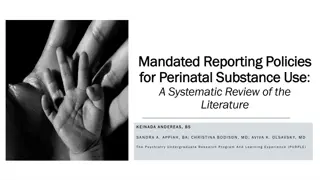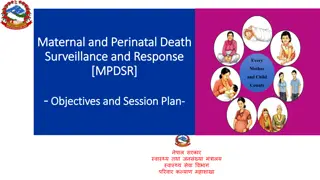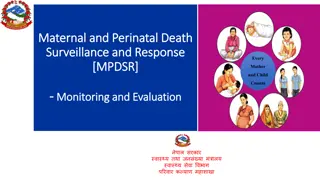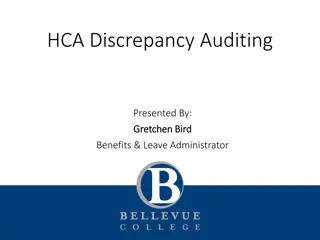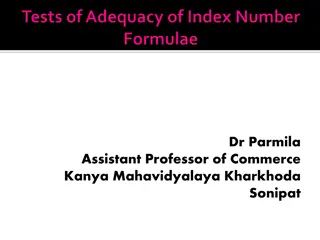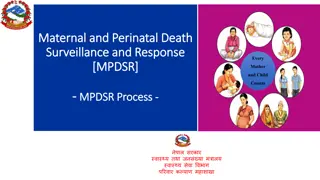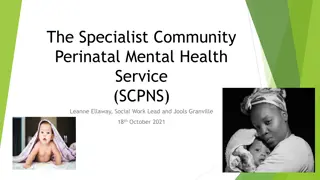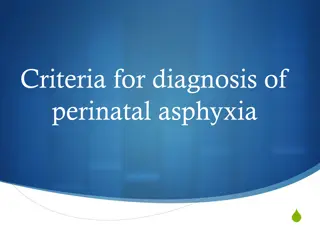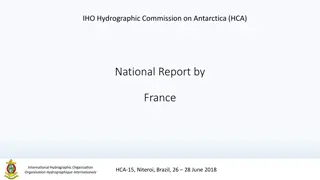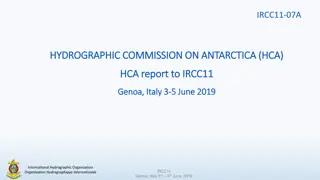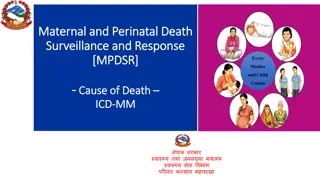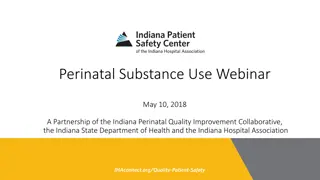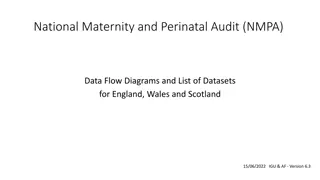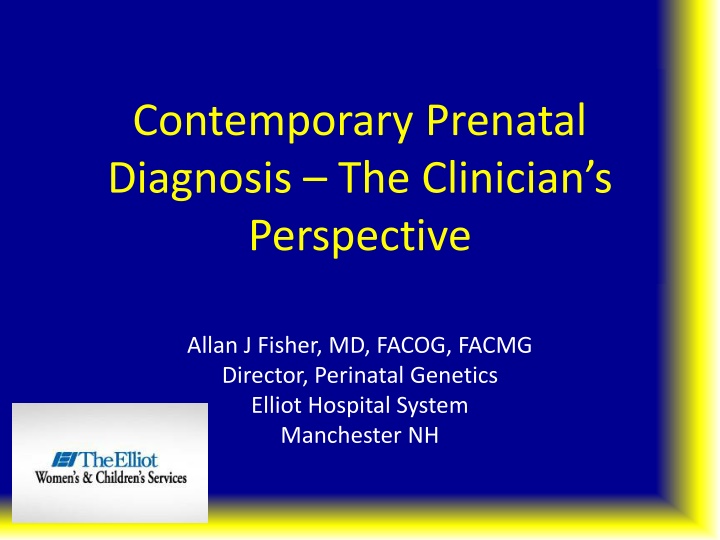
Prenatal Diagnosis: Insights from a Clinician's Perspective
Delve into the realm of contemporary prenatal diagnosis from the viewpoint of Dr. Allan J. Fisher, exploring noninvasive prenatal testing, screening criteria, best practices, sensitivities, specificities, factors influencing false negatives and positives, and failure rates in prenatal genetic testing. Gain valuable insights into the complexities and advancements in prenatal diagnosis.
Download Presentation

Please find below an Image/Link to download the presentation.
The content on the website is provided AS IS for your information and personal use only. It may not be sold, licensed, or shared on other websites without obtaining consent from the author. If you encounter any issues during the download, it is possible that the publisher has removed the file from their server.
You are allowed to download the files provided on this website for personal or commercial use, subject to the condition that they are used lawfully. All files are the property of their respective owners.
The content on the website is provided AS IS for your information and personal use only. It may not be sold, licensed, or shared on other websites without obtaining consent from the author.
E N D
Presentation Transcript
Contemporary Prenatal Diagnosis The Clinician s Perspective Allan J Fisher, MD, FACOG, FACMG Director, Perinatal Genetics Elliot Hospital System Manchester NH
Noninvasive Prenatal Testing (Screening) Introduced commercially October 2011 High sensitivity and specificity in the high risk population Two types Massive Parallel Shotgun Sequencing Targeted Fetal DNA Sequencing
Criteria Currently: High risk population 35 and above Ultrasound findings Increased risk via other screening Family history Prevalence = 1/8 vs. 1/600 (low risk population) PPV 90% vs. 11%
Which is Best? Tough question MPSS (Sequenom, Vernata) Targeted Fetal DNA Sequencing Ariosa DANSR/FORTE: hybridize, amplify, sequence Natera: Massive multiplex isolation with SNP analysis
Sensitivities & Specificities All have high sensitivities >99% DS and T18 More variable for T13 Less data for sex chromosomal abnormalities All have low false positive rates
False Negatives Gestational age (<10 wks) Fetal fraction Maternal Weight Genetic Variants Failure to extract adequate material Individual variation in cfDNA amount GC rich regions
False Positives Contamination Vanishing twin Placental mosaicism (more in T13,18, 21) Low level mosaicism (esp. sex chromo) Maternal mosaicism (loss of X in older women) Maternal Cancers (only a few cases, no specific pattern)
Failure Rates Trial Failure Rate DS Detection FP rate Chiu et al. 2011 11/764 (1.4%) 86/86 3/146 Ehrich et al. (2011) 18/467 (3.8%) 39/39 1/410 Palomaki et al. (2011) 13/1696 (0.8%) 209/212 3/1471 Bianchi et al. (2012) 148/532 (3.0%) 89/89 0/404 Norton et al. (2012) 148/3228 (4.6%) 81/81 1/2888 Zimmerman et al. (2012) 21/166 (12.6%) 11/11 0/145 ALL 424/6687 (3.2%) 424/427 (99.3%) 8/5319 (0.15%) Note: Not all study designs the same, different techniques, variety of FP rates, thresholds to call DS risk have different methodologies
Remember There is no free lunch Nothing in biology is 100% Are we going backwards in PNDx? Does not detect many things yet
ACOG,ACMG, ISPD, NSGC: Common Themes Great sensitivities and specificities for T21 & T18 Not diagnostic Needs Genetic Counseling (pre- and post) Should only be used in validated groups More studies needed for the general population
Shifting Paradigms Does NIPT replace other screening tests available today? Better sensitivity but look what we are missing . First & second trimester ultrasound benefits Increased NT, early defects, cardiac esp. Other anomalies seen in embryological progression (cranial, skeletal, cardiac) Serum screening benefits Unexplained increased MSAFP Low uE3 (SLO, X linked ichthyosis, sulfatase deficiency, congenital adrenal hypOplasia, Zellweger, Antley Bixler, POMC deficiency, other cholesterol metabolism, IUGR, SAB) Low PAPP-A Combination of abnormal biochemical markers
Future Twin and population data Aneuploidy in all chromosomes Targeted microdeletion and microduplication syndromes Low density microarray (>10mB) Single gene defects (CF, -thal, many others) Whole genome sequencing (ultimate goal)
Chromosomal Microarray (CMA) Introduced in the prenatal arena circa 2005 Results and counseling still from postnatal databases Unknowns (VOUS) Comparative array hybridization vs. SNP oligo-array
CMA has changed Prenatal Diagnosis Increased detection of chromosomal variation Ability to detect absence of heterozygosity (SNP Oligo-array) Consanguinity UPD (heterodisomy is harder to detect) Inherited disorders (AR, AD, X-linked) Triploidy Both miss true balanced translocations (0.08-0.09%) and other balanced rearrangements
Increases Detection Shaffer et al. Prenatal Diagnosis 2012 2004-2011 N = 5003 prenatal cases, various reasons All known aneuploidy excluded from karyotype No fetal demises Detection of an additional 5.3% abnormals (6.5% & 8.2% for abnormal US and demise, respectively) 0.39% de novo copy number variations noted 71% found below the resolution of karyotype (<10Mb). Thus 29% should have been detected via karyotype!
Specific Ultrasound Anomalies Detection rates of clinically significant genomic alterations by microarray analysis for specific anomalies detected by ultrasound n=2858 cases Clinically significant genomic alterations were identified in cases with a single ultrasound anomaly (n= 99/1773, 5.6%) Anomalies in two or more organ systems (n= 77/808, 9.5%), isolated growth abnormalities (n= 2/76,2.6%), and soft markers (n= 2/77, 2.6%). High detection rates: holoprosencephaly (n= 9/85, 10.6%), posterior fossa defects (n= 21/144, 14.6%), skeletal anomalies (n= 15/140, 10.7%), ventricular septal defect (n= 14/132, 10.6%), hypoplastic left heart (n= 11/68,16.2%), and cleft lip/palate (n= 14/136, 10.3%) Shaffer et al, Prenatal Diagnosis 2012, 32: 986 995 (free)
GENERAL POPULATION? Issues: Wapner et al. (NEJM 2012) showed 1.7% (1:60) of patients with abnormal CMA (aCGH) for AMA alone (no ultrasound findings) or abnormal serum screening Positive Predictive Values decreases significantly Unknowns more so with Whole Genome/Exome Sequencing
The Unknowns this is truly not unique to us Copy number loss and gain Parentally inherited? Incompletely penetrant/variable phenotype? What genes are involved? Significance of these genes? Inherited disorders (AR, AD) involved? Does it agree with the phenotype? How large? Does this make a difference? What about future findings at this site? Are we obligated to follow up in the future? Who will take this responsibility?
How Do We Navigate Now? Talk with the patient : nothing , everything or don t know Are patients truly informed? Find out the patient s perception of risk and their comfort level The information (and decision) can be overwhelming for patients Time constraints for patient education (not everyone is at the same level) When to educate? Prenatal is ideal.
Paradox vs. Paradigm Noninvasive vs. Diagnostic (none vs. slight risk) Less vs. detailed information Missing clinically significant disorders vs. VOUS Explaining FP and FN with all tests Pleotropic phenotypes with all genetic disorders (or findings) Education for professionals and lay public
Thank you. Questions?


